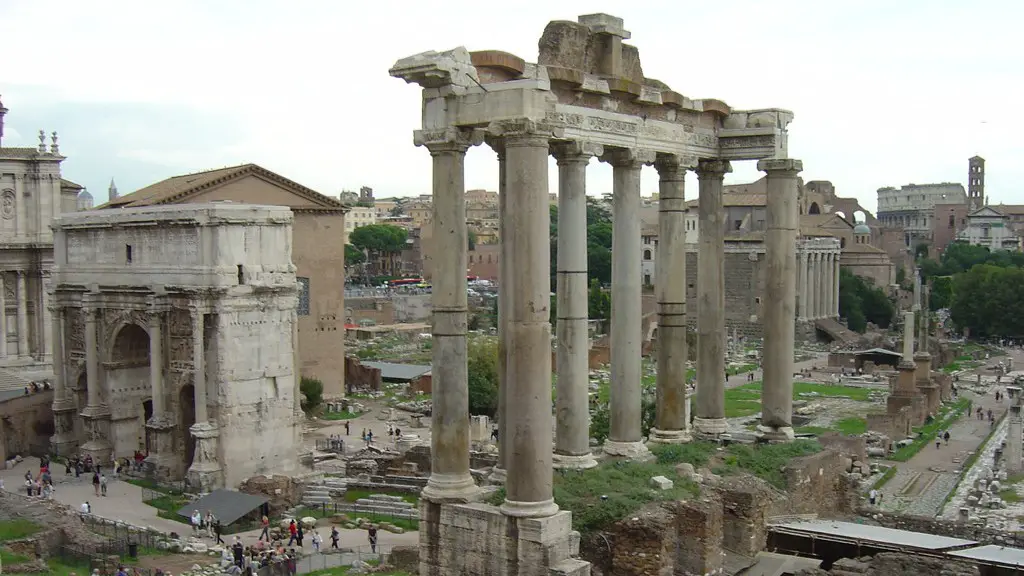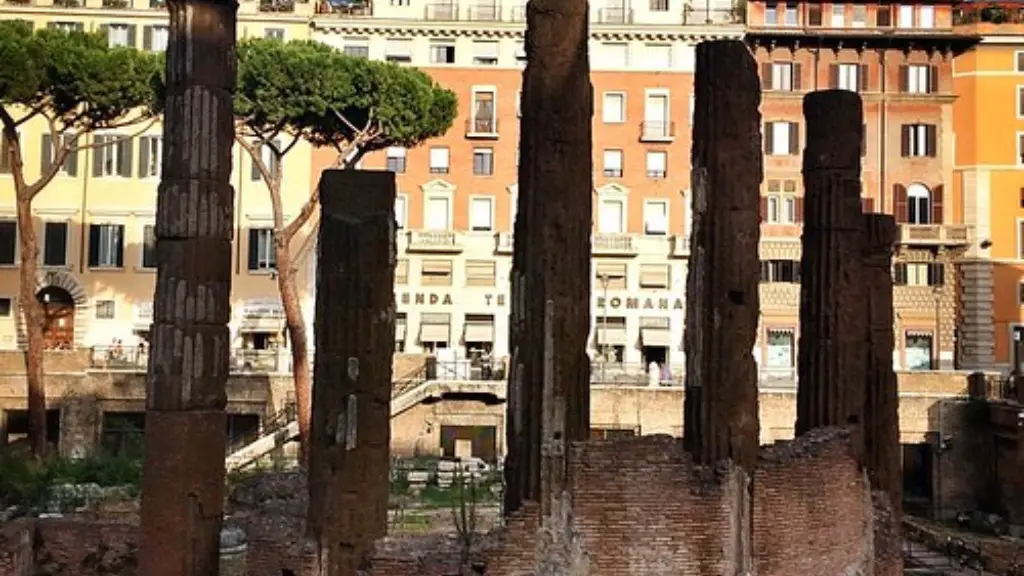The ancient Roman civilization was one of the most powerful and influential of its time. It was renowned for its sophisticated political system, which included three branches of government. These three branches helped the people of Rome to run their government efficiently, with checks and balances in place to prevent too much power from being concentrated in one place. In this article, we will explore the three branches of government in ancient Rome, how they worked together, and the roles they played in Roman society.
The three branches of Roman government were the senate, the consuls, and the people. The Senate was the oldest and most powerful branch. It consisted of members chosen by patrician families, who helped to make laws, oversee government operations, and judge any legal matters that arose. The consuls were elected officials who served as the chief executive and helped enforce rules and laws. The people of Rome formed the third branch of government and were mainly responsible for making laws, known as plebiscites, which had the same force of law as those passed by the Senate.
The three branches of government in ancient Rome helped to keep the government running efficiently and, most importantly, to protect the rights of its citizens. The Senate was the most powerful body, but it could not pass laws without the approval of the people. Likewise, the people could not pass laws without the approval of the Senate. The consuls helped to enforce the laws and usually had veto power over decisions made by either the Senate or the people. This system of checks and balances served to keep the government in balance, preventing any one branch from gaining too much power.
Although the three branches of government in ancient Rome were relatively stable, they did not always work harmoniously. This was mainly due to the fact that political power was concentrated in the hands of the patricians, whereas the plebeians were often excluded from power. As a result, the people often resorted to strikes and protests in order to gain rights and freedoms that had been denied to them. This further complicated matters and led to further tension between the three branches of government.
The three branches of government in ancient Rome helped to keep the society orderly by ensuring that all individuals had rights and freedoms, as well as playing a major role in keeping the government running efficiently. The Senate held the most power, while the people had the final say in legislation. Lastly, the consuls acted as the chief executive, making sure that laws were enforced. This system worked, with occasional bumps and quarrels, to maintain the stability of the Roman government.
Roles of Senate
The Senate was the oldest, most influential, and most powerful branch of the Roman government. It was composed of members nominated by particular patrician families, who then had a voice in ordinances and justice for matters of public policy. They had the power to make and pass laws, which all citizens had to obey. The Senate had the prerogative to appoint all magistrates, which included the consuls, who formed the executive branch of the Roman government. This branch oversaw all matters of governmental affairs and public administration, including foreign relations.
The Senate also decided when consuls should go to war. This was a decision of national importance, as it could incur significant losses of life, wealth, and honor. Furthermore, they could control the finances and give praise or condemn military campaigns that were conducted with regard to these financial restraints. The Senate also had the power to impeach, restrict, or issue decrees as they deemed necessary. This branch also acted as a check to ensure laws were not enacted which were contrary to the laws already present.
At the center of the Senate’s powers were its esteemed members, the Senators. To be a Senator was the highest honor, and the selection process was rigorous. This made certain that Rome was always led by those who were knowledgeable, talented and virtue. Consequently, the Senate served as the locus of Roman policy-making and provided much of the stability that kept Rome functioning.
Roles of Consuls
The consuls of Rome were the highest elected officials and formed the executive branch of the Roman government. They applied and administered laws, supervised religious ceremonies, and led military campaigns, amongst other duties. Consuls had similar responsibilities to those of the present-day president, except that the requirement to serve was limited to a one-year term. There were usually two consuls at the same time, who both wielded the same powers. This made certain that no individual could become too powerful.
The consuls could only make declarations and act with the approval of the Senate. All decisions that were made by the consuls had to also be approved by the Senate, as they were the ultimate authority. Furthermore, consuls could only pursue military campaigns that were approved by the Senate. They were also the ultimate legislative power and were responsible for appointing members of the Senate, as well as other members of the executive branch.
Aside from the powers given to them by the Senate, consuls also held presiding powers. This enabled them to ratify, modify, or reject legislation that had been submitted by the people to the Senate. Furthermore, they had the power to appoint other magistrates, such as censors, tribunes, and quaestors, as needed.
In addition to their political powers, consuls also had the responsibility of maintaining public order and the security of the state. They had to maintain peace and stability in the Roman Republic and could order punishments for those who had broken the law. This ensured that Roman society was governed and that any violations of law or customs were dealt with accordingly.
Roles of People
The Roman people were the ultimate legislative branch of the Roman government. Through the voting process they had a direct say in the laws that were passed and had the ability to ratify or reject legislation which was approved by the Senate. They were also the ones who elected the two consuls and could vote to impeach them if they deemed it necessary.
The people were an essential part of the Roman Republic and all their rights were respected and honored. The process of voting gave citizens the chance to be informed and have their voices heard. Elections were done by secret ballot and elections were usually held every four years. The Roman people had the right to vote for magistrates who could make laws, which had the same legal force as those approved by the Senate.
By participating in the voting process, the Roman people had the power to make their opinions and wishes known. This ensured that the government was accountable to its citizens in a very meaningful way. This also helped to ensure that fate of Rome was determined by its people, rather than by the patrician class.
Social Impact
The three branches of government in ancient Rome had a significant effect on the social structure of Roman society. The Senate was the most powerful institution and was made up of the patrician class. This allowed them to maintain their privileged position in society and to indoctrinate the principles of their beliefs into the laws of the republic. This, in turn, excluded the common people from the decision-making process. This kept Rome from embracing democratic principles and enabled the patrician class to remain in power without facing any substantial challenges.
At the same time, the people of Rome were able to exercise their right to vote and decide which laws were passed. This enabled them to have a say in matters which affected their daily lives and put a check on the power of the Senate. In addition, the presence of the consuls allowed them to keep the government in balance, ensuring that no single branch became too powerful. This provided stability and continuity to the Roman Republic and allowed society to remain relatively harmonious.
Legacy
The three branches of government in ancient Rome had a lasting legacy. The structures and roots that were laid down by this system can still be seen in modern governmental systems today. Indeed, the separation of executive, legislative, and judicial powers is an integral part of any functioning democracy. The legacy of the Roman Republic can also be found in the concepts of individual rights and freedoms, and the preservation of civil liberties for citizens. All of these are direct descendants of the three branches of government in ancient Rome.
Moreover, the three branches of government imbued the Roman Republic with an orderly and efficient structure. This was one that was capable of adjustment as its citizens needed, and one that could adapt to different challenges and new realities. This structure made the Roman Republic a great power of the ancient world and enabled it to last for hundreds of years. In this way, the three branches of government in ancient Rome left a lasting impact on law, politics, and society.
Conclusion
The three branches of government in ancient Rome were the Senate, the consuls, and the people. The Senate was the oldest and most influential branch, while the consuls held executive powers and the people had the ultimate say on the laws that were passed. This system of checks and balances ensured the stability of the Roman Republic and served to protect the rights of its citizens. It also allowed Rome to remain a great power for centuries and still has a lasting legacy in modern governmental systems.





